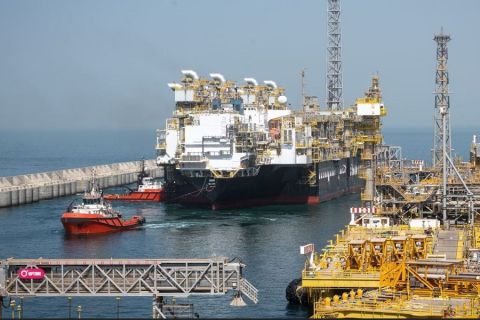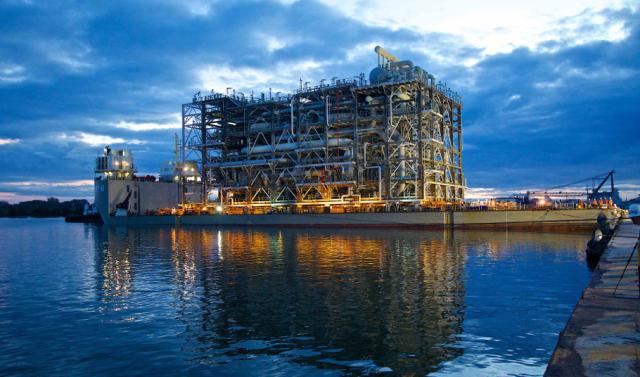
More than 65% of the Wheatstone LNG project is complete. All of the process modules have been delivered for Train 1. (Source: Chevron)
The demand for natural gas in the Far East and Southeast Asia continues unabated. With about 85% of the contracts for LNG supply in the Far East linked to the price of crude oil, the much lower gas prices have buoyed demand in the region. Even China, which is in the throes of a recession, has increased its demand for LNG.
At its meeting Dec. 4, 2015, OPEC approved Indonesia’s readmission as the group’s 13th member. Originally joining OPEC in 1961, Indonesia had been inactive since early 2009. It remains the only Asian member of OPEC and the only member that is a net importer of petroleum and other liquids.
Even though Indonesia remains a net oil importer, it now can buy crude directly from other OPEC members. The country continues to push floating LNG (FLNG) plants to provide domestic sources of natural gas at the same time it is exporting LNG as a source of revenue generation.
This is a prime example of the challenge facing Australasia. Indonesia, Malaysia and Australia are major exporters of LNG, yet Indonesia and Malaysia import LNG and crude oil and Australia imports refined products.
Low oil prices have put a major dent into project development because of the resulting lower gas prices. Many of the LNG projects in Australia, for example, began when oil prices were closer to $100. The Gorgon LNG facility received its cooldown cargo at year-end 2015. The $54 billion project is expected to export its first cargo in early 2016. At lower gas prices, it will take considerably longer to recoup those costs.
Curtailing operations
Although the consumers in the Far East are benefiting from the low oil prices, the producers are still facing tightening budgets and reduced spending. Shell Malaysia, for example, is reducing its workforce by 1,300 jobs over a two-year period from a total of 6,500 employees, the company said in a Sept. 29, 2015, press release. The layoffs will come in the upstream division.
Even with the layoffs, the company remains active in the upstream. Shell Malaysia achieved an important milestone in the construction of a tension-leg platform (TLP) for its second deepwater venture, the Malikai oil field, 100 km (60 miles) offshore Sabah. In early September 2015 the topsides were safely integrated on the TLP. This is the company’s first TLP designed and fabricated in Malaysia. The main drilling campaign for the field is scheduled to begin in 2016.
In Indonesia Chevron is withdrawing from some operations while remaining active in other areas. The company will release its contract to operate the East Kalimantan Block when it ends in October 2018. The company also said it planned to sell its interest in the South Natuna Sea Block B. Chevron will continue activities in deepwater operations in Indonesia.
Indonesian field developments
In its Nov. 20, 2015, edition Subsea Engineering News reported that Husky Energy and its partners achieved a significant milestone in the development of the Madura Strait BD gas-condensate field offshore Indonesia. The jacket and wellhead platform for the liquids-rich gas field were sailed out in late October and have been successfully installed in about 55 m (180 ft) of water. Development drilling is expected to begin soon, and the project remains on target for first production in 2017. The BD Field is the first of a series of gas developments the company is advancing offshore Indonesia, which are expected to add production in 2017 through 2019.
Malaysian gas projects
On Jan. 22, 2016, Lundin Petroleum agreed to sell the Bertam FPSO unit to M3nergy Investment Ltd., a wholly owned subsidiary of M3nergy Berhad of Malaysia, for a cash consideration of $265 million based on a transaction effective date of Jan. 1, 2016. The FPSO unit is now operating on the Bertam Field in Block PM307 offshore peninsular Malaysia.
Hess Corp. began development drilling in the North Malay Basin offshore Malaysia in December 2015. Full-field development is anticipated to be completed in 2017, the company said in its fourth-quarter 2015 report Jan. 27, 2016.
Offshore Sarawak Technip was awarded a subsea contract by JX Nippon Oil and Gas Exploration (Malaysia) Ltd. in the Layang Field on Block SK 10, Technip said in an Oct. 22, 2015, press release.
The contract covers the engineering, procurement, fabrication, installation and commissioning of three flexible pipes totaling 9.9 km (6 miles). The project is scheduled to be completed in second-half 2016.
Aker Solutions also tied up a deal in Malaysia with Murphy Sabah Oil Co. Ltd. to deliver the subsea production system for the Rotan deepwater natural gas development offshore. The contract calls for four subsea wells, a hub manifold, inline tees, a connection system and production control system. First deliveries are scheduled for second-quarter 2016, the release said.
Australia
Australia continues its efforts to supplant Qatar as the leading LNG producer in the world. But the pace of development has slowed considerably. The same could be said for the onshore shale industry.
In hopes of invigorating its shale efforts in the Northern Territory’s McArthur Basin, Armour Energy agreed to a $130 million farm-in from Aubrey McClendon’s American Energy Partners.
Onshore in the Perth Basin, AWE Ltd. made the final investment decision (FID) for Stage 1A of the Waitsia gas field development project in Western Australia, according to a Jan. 25, 2016, news release. Stage 1A includes installation and upgrades to existing assets that will connect the Waitsia-1 and Senecio-3 gas wells to the Xyris Production Facility. First gas is scheduled for August 2016.
AWE also is evaluating the potential for jointly developing the nearby Senecio/Synaphea/Irwin tight gas fields.
Moving offshore, Woodside, operator of the North West Shelf Project, said the project participants have approved the Greater Western Flank Phase 2 Project off the northwest coast of Australia.
The total investment for the project is expected to be about $2 billion, with initial project startup expected in second-half 2019.
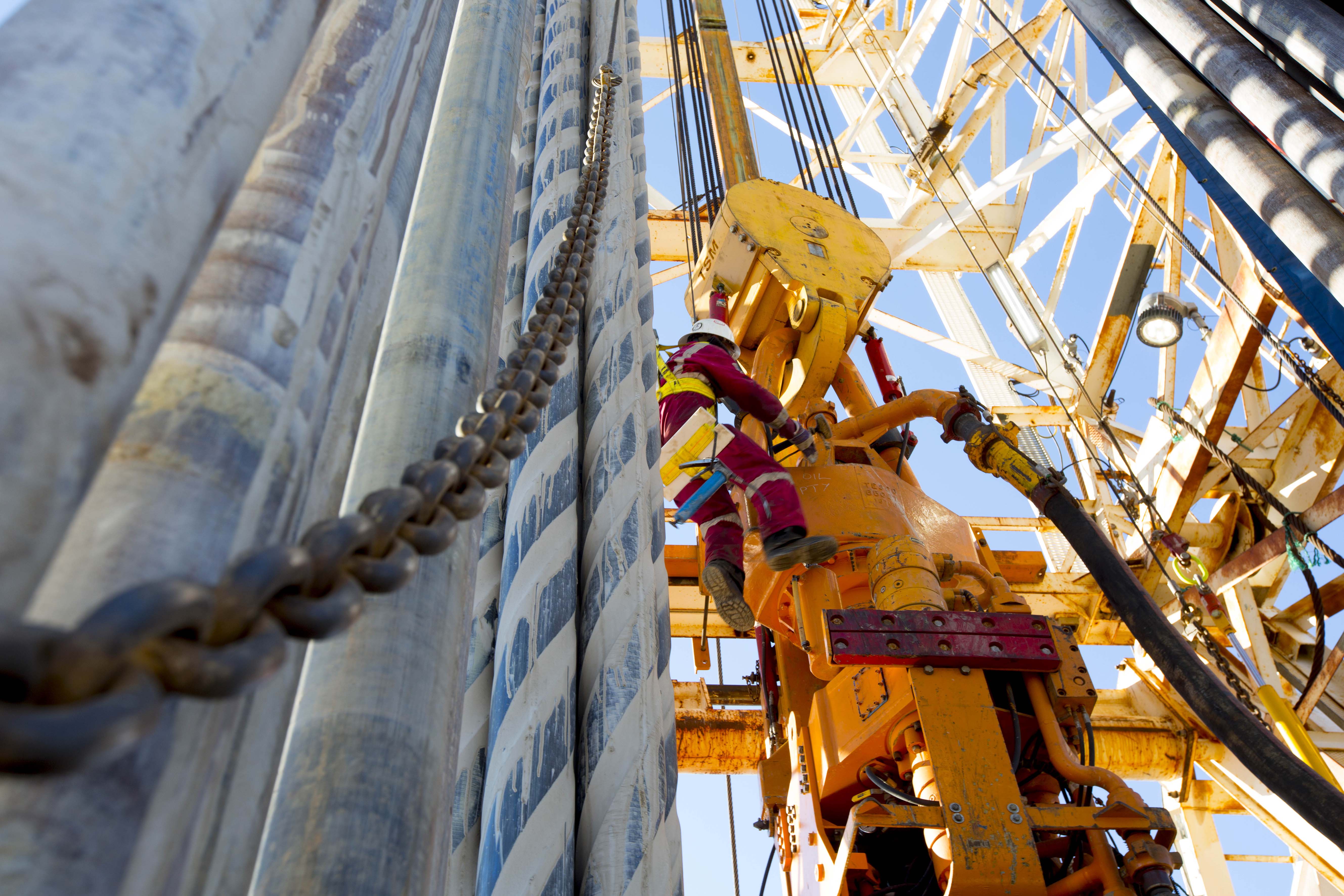
The Drover-1 well in the Perth Basin was completed in mid-2014. Initial results indicated that the Kockatea Shale has good source potential for gas liquids, and three intervals have been identified that could constitute targets for future operations or appraisal. (Source: AWE Ltd.)
LNG projects
Subsea Engineering News reported in its Oct. 9, 2015, issue that Inpex Corp. launched its central processing facility (CPF) for the Icthys Field LNG development. The CPF is understood to be the world’s largest semisubmersible unit and was offi cially launched from the Samsung Heavy Industries shipyard in Geoje, South Korea.
Once completed, the CPF will be towed 5,600 km (3,360 miles) to the Ichthys Field in the Browse Basin offshore Western Australia, where it will be permanently moored.
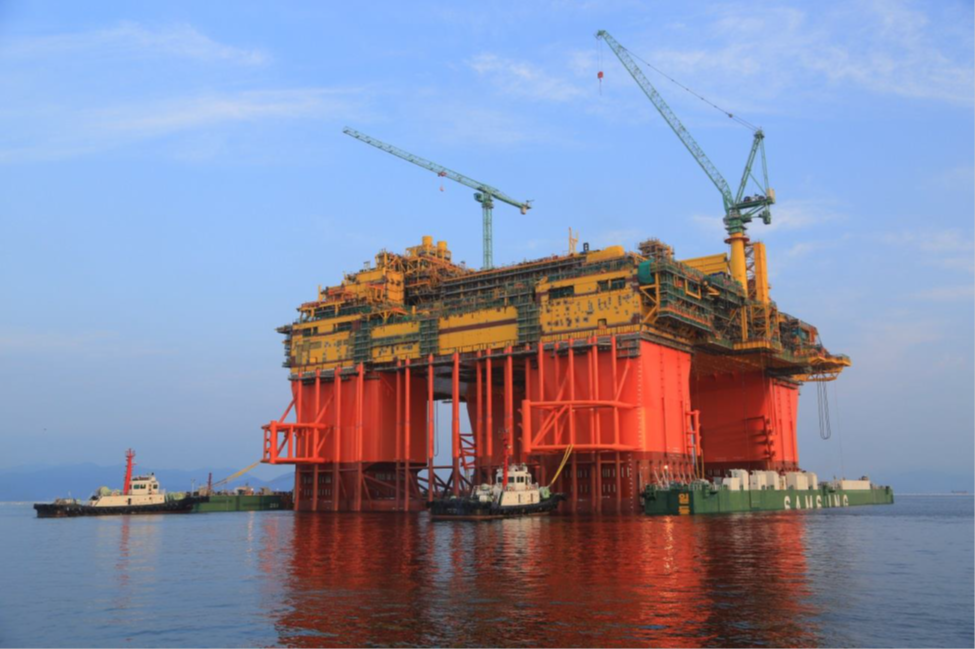
Inpex also submitted a revised development plan for its Abadi LNG Project in Indonesia’s Arafura Sea, which calls for use of a larger floater than originally planned. The revised plan was awaiting approval by the Indonesian government.
Malaysia’s PFLNG 1 vessel, which will be renamed PFLNG Satu, was nearing completion in late August 2015. The liquefaction plant was due onstream in early 2016.
At the same time, construction on the second and larger unit—PFLNG 2—is now well underway in partnership with Murphy Oil.
PFLNG 1 will be moored over the Kanowit gas field 180 km (108 miles) offshore Sarawak in 1,150 m (3,772 ft) of water. PFLNG 2 is destined to be commissioned during 2018 and initially employed and centered on the deepwater Rotan gas field in Murphy-operated Block H, 130 km (78 miles) offshore Sabah.
Australia has a long list of LNG plants nearing production or an FID. For Woodside, Browse FLNG work continues on a range of activities related to the commercialization, timing and sequencing of FLNG development required to support an FID in second-half 2016.
The Wheatstone Project is more than 65% complete. Recently Chevron signed heads of agreement (HOA) with two Chinese companies for delivery of LNG from Gorgon. The first HOA was a nonbinding agreement with ENN LNG Trading Co. Ltd. for delivery of LNG for 10 years, starting in 2018 or 2019.
The second nonbinding HOA was with China Huadian Green Energy Co. Ltd. When the agreement is finalized, China Huadian Green Energy is expected to receive up to 1 MMmt/year over 10 years starting in 2020.
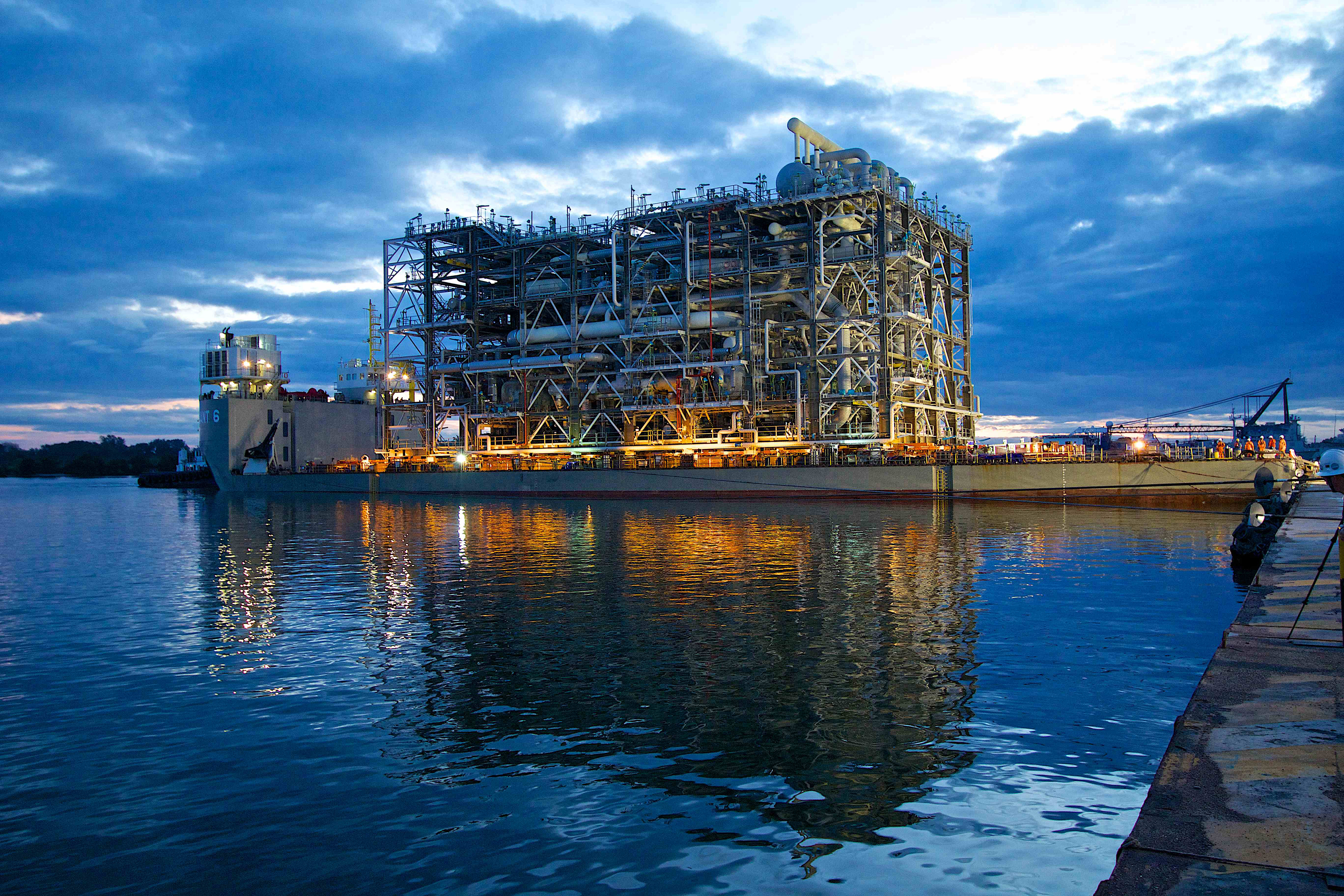
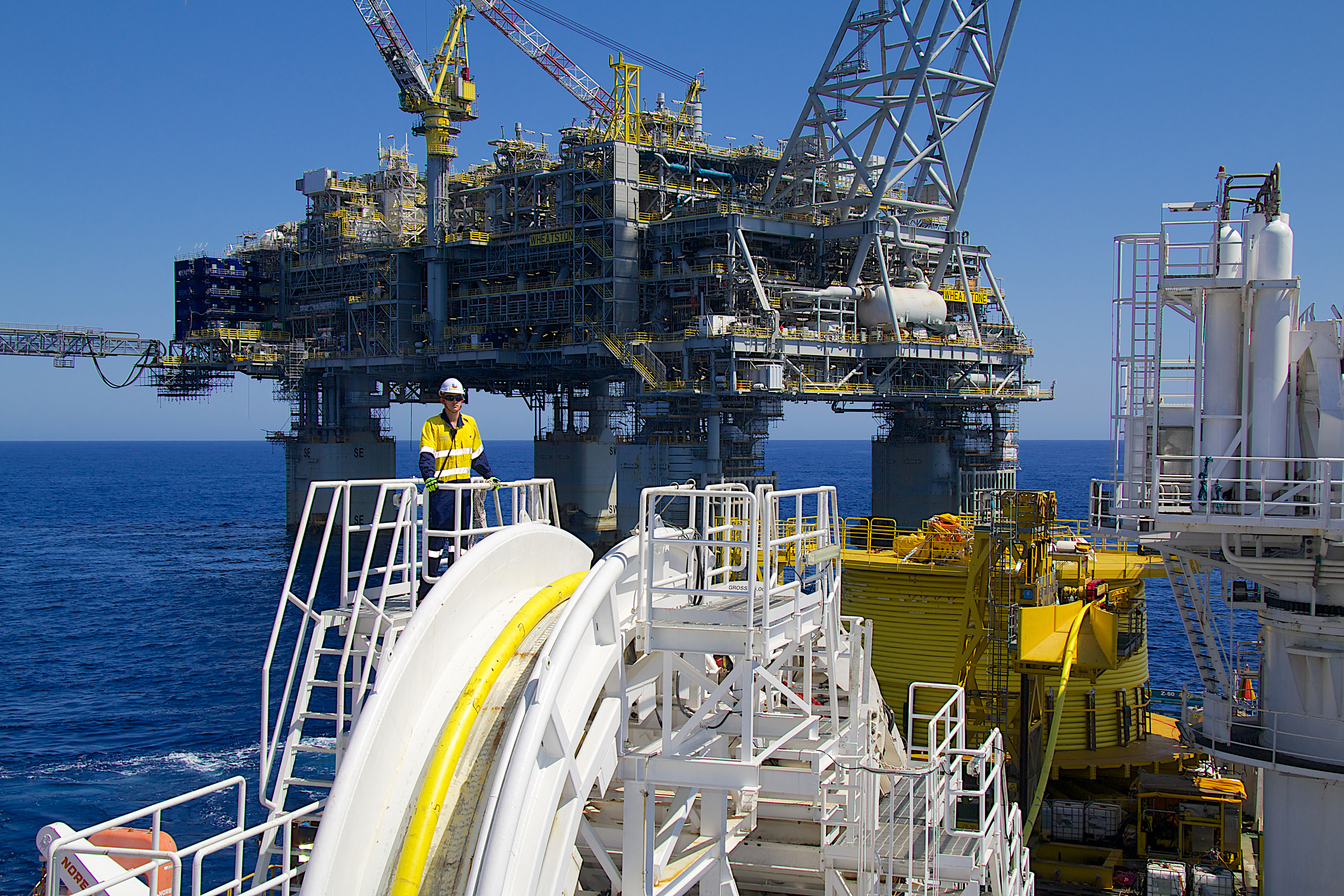
New Zealand awards E&P permits
In mid-December 2015 the government of New Zealand awarded nine new oil and gas permits. The onshore and offshore permits are in the Taranaki Basin on the country’s North Island.
Four offshore permits were awarded to OMV NZ Ltd. and Mitsui E&P Australia Pty. Ltd. A fifth offshore permit went to Todd Exploration and a sixth permit to Mont D’Or Resources Ltd.
Three onshore permits were granted to Petrochem Ltd., a unit of Greymouth Petroleum Ltd.
Recommended Reading
Deepwater Roundup 2024: Offshore Africa
2024-04-02 - Offshore Africa, new projects are progressing, with a number of high-reserve offshore developments being planned in countries not typically known for deepwater activity, such as Phase 2 of the Baleine project on the Ivory Coast.
Deepwater Roundup 2024: Offshore Australasia, Surrounding Areas
2024-04-09 - Projects in Australia and Asia are progressing in part two of Hart Energy's 2024 Deepwater Roundup. Deepwater projects in Vietnam and Australia look to yield high reserves, while a project offshore Malaysia looks to will be developed by an solar panel powered FPSO.
BP: Gimi FLNG Vessel Arrival Marks GTA Project Milestone
2024-02-15 - The BP-operated Greater Tortue Ahmeyim project on the Mauritania and Senegal maritime border is expected to produce 2.3 million tonnes per annum during it’s initial phase.
E&P Highlights: Feb. 26, 2024
2024-02-26 - Here’s a roundup of the latest E&P headlines, including interest in some projects changing hands and new contract awards.
E&P Highlights: April 15, 2024
2024-04-15 - Here’s a roundup of the latest E&P headlines, including an ultra-deepwater discovery and new contract awards.



